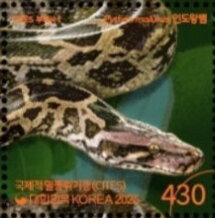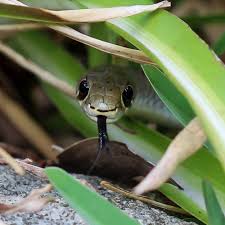Stamp: Indian Python (Python molurus) (Korea, South 2025)
Indian Python (Python molurus) (Korea, South 2025)
09 July (Korea, South ) within release Endangered Speicies on CITES Trade Ban Lis (2025) goes into circulation Stamp Indian Python (Python molurus) face value 430 South Korean won
| Stamp Indian Python (Python molurus) in catalogues | |
|---|---|
| Colnect codes: | Col: KR 2025.07.09-01a |
Stamp is square format.
stamp from se-tenant strip of fourAlso in the issue Endangered Speicies on CITES Trade Ban Lis (2025):
- Stamp - Endangered Speicies on CITES Trade Ban List face value 430;
- Stamp - Endangered Speicies on CITES Trade Ban List face value 430;
- Stamp - Indian Python (Python molurus) face value 430;
- Stamp - Pancake Tortoise (Malacochersus tornieri) face value 430;
Stamp Indian Python (Python molurus) it reflects the thematic directions:
Animals are multicellular, eukaryotic organisms of the kingdom Animalia (also called Metazoa). All animals are motile, meaning they can move spontaneously and independently, at some point in their lives. Their body plan eventually becomes fixed as they develop, although some undergo a process of metamorphosis later on in their lives. All animals are heterotrophs: they must ingest other organisms or their products for sustenance.
Snakes are elongated, limbless reptiles of the suborder Serpentes Like all other squamates, snakes are ectothermic, amniote vertebrates covered in overlapping scales. Many species of snakes have skulls with several more joints than their lizard ancestors, enabling them to swallow prey much larger than their heads (cranial kinesis). To accommodate their narrow bodies, snakes' paired organs (such as kidneys) appear one in front of the other instead of side by side, and most have only one functional lung. Some species retain a pelvic girdle with a pair of vestigial claws on either side of the cloaca. Lizards have independently evolved elongate bodies without limbs or with greatly reduced limbs at least twenty-five times via convergent evolution, leading to many lineages of legless lizards. These resemble snakes, but several common groups of legless lizards have eyelids and external ears, which snakes lack, although this rule is not universal (see Amphisbaenia, Dibamidae, and Pygopodidae).


